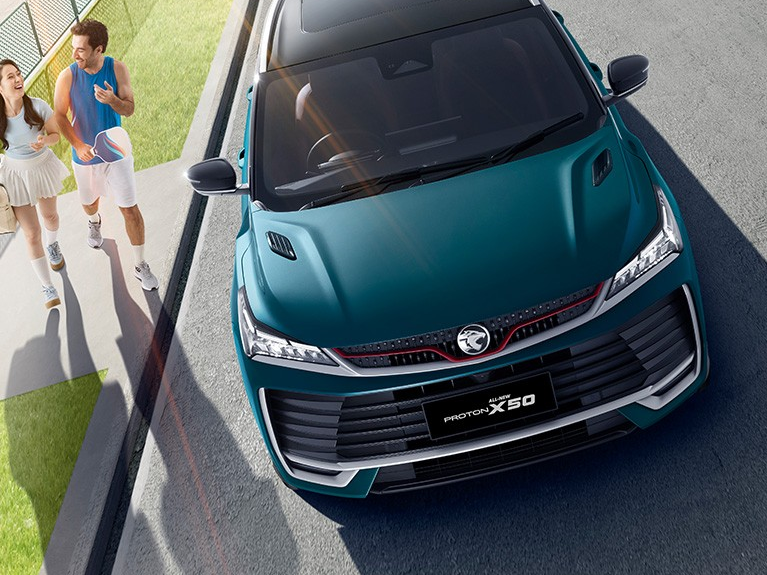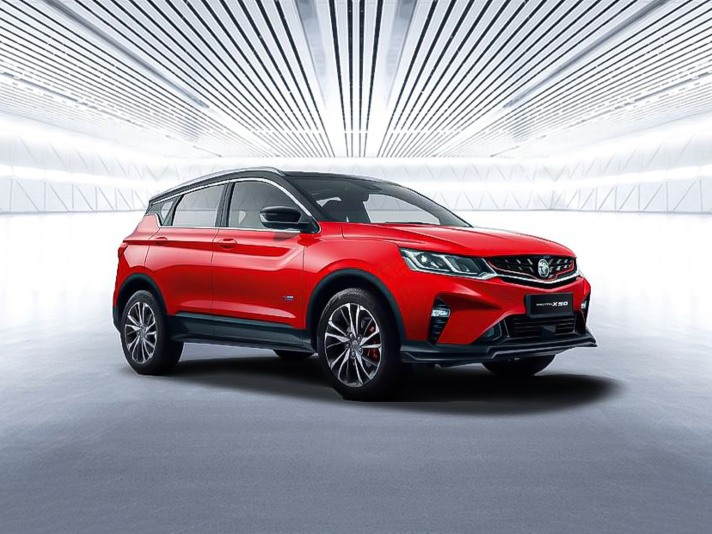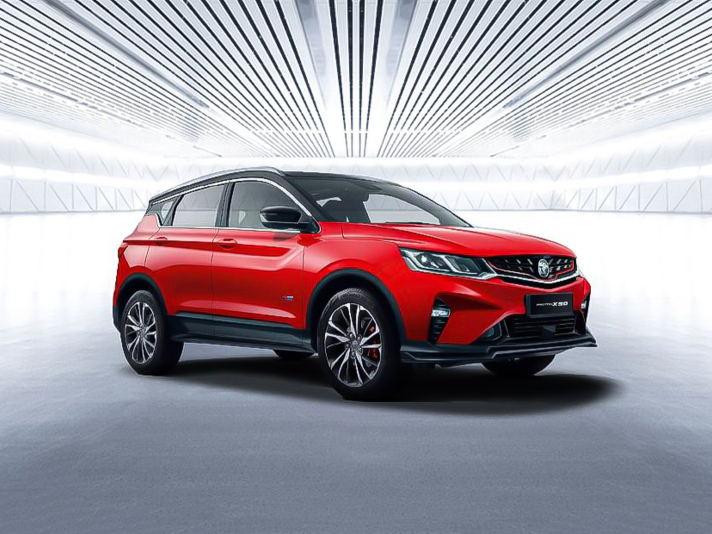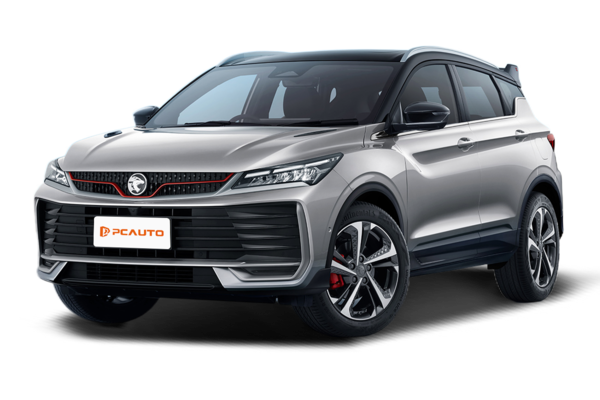Q
how to start Proton X50 without key
Alright, here's the lowdown on starting your Proton X50 if you find yourself without the key. First off, let's be crystal clear: under normal circumstances, you must use the original factory key or smart key with the keyless start system to fire up the engine. This is all about keeping your ride secure and preventing any unauthorized joyrides.
If your key goes missing or takes a tumble and breaks, don't panic – but do act fast. Your best bet is to reach out straight away to a Proton authorized service center or a reputable auto locksmith. They've got the official diagnostic gear to either reprogram a new key or hook you up with a temporary fix. Whatever you do, steer clear of sketchy workarounds like trying to hotwire the ignition. That's a surefire way to fry your car's electronics or, worse, create a serious safety hazard.
Something else to note: the X50's smart key system uses encryption tech, which is a big win for anti-theft, by the way. So, make it a habit to keep your key safe and sound, and check the battery level regularly. A dead battery in the key is a quick way to get stranded.
Now, if you're in a real bind, some models might let you start the car remotely using your phone app – but you'll need to check if your X50 has that feature, and you must have set up the account and be connected to the internet beforehand.
At the end of the day, if you're having key troubles, the safest and most reliable move is always to call in the pros – either Proton directly or a trusted locksmith.
Special Disclaimer: This content is published by users and does not represent the views or position of PCauto.
Related Q&A
Q
Does the Proton X50 have Android Auto?
Yes, the Proton X50 does support the Android Auto feature. Users can pair their Android phones with the vehicle's infotainment system via a USB cable, enabling them to use applications like navigation, music, and calls on the car's head - unit, which enhances driving convenience. Besides Android Auto, the Proton X50 is also compatible with Apple CarPlay to meet the needs of iPhone users. Its 7 - inch central control touchscreen offers smooth operation and an intuitive interface design, giving it a strong sense of technology.
It's worth mentioning that the addition of Android Auto and Apple CarPlay makes the X50 more competitive in terms of smart connectivity, especially appealing to the young consumer group in Malaysia. Moreover, the Proton X50 is also equipped with other practical features such as voice control, a rear - view camera, and multiple driving mode options, further enhancing the comfort and safety of daily driving.
If you have any questions about the specific operation or compatibility of the car's infotainment system, it is recommended that you visit an authorized Proton dealer to experience the vehicle's functions in person or refer to the official manual for more detailed usage instructions.
Q
Does the Proton X50 have a sunroof?
Yes, the Proton X50 is indeed equipped with a Panoramic Sunroof, which is a highlight feature of this model. It's especially available in higher - spec versions like the Premium and Flagship. This panoramic sunroof can offer passengers a broader view and better lighting inside the car.
The panoramic sunroof not only enhances the luxury feel of the interior but also adds to the driving pleasure during the night or on sunny days. However, it's important to note that proper maintenance of the sunroof is crucial. Regularly cleaning the tracks and seals can prevent water leakage and abnormal noises.
Given Malaysia's hot climate, it's advisable to use the sunshade when parking the car for an extended period to reduce the temperature rise inside. Meanwhile, the sunroof's UV - protection design can also safeguard passengers from direct sunlight.
As a popular SUV in the local market, the Proton X50 is well - received by consumers for its features and cost - effectiveness. The addition of the sunroof further boosts its appeal. If you're interested in this vehicle, you can visit a nearby Proton showroom to experience its performance firsthand.
Q
Does the Proton X50 have paddle shifters?
Yes, the Proton X50 comes with paddle shifters on certain models, especially the higher - spec versions like the 1.5 TGDi Flagship. This model is equipped with a 7 - speed Dual Clutch Transmission (DCT) and offers the paddle shifter feature, allowing drivers to manually control gear shifts, enhancing driving pleasure and handling flexibility.
The paddle shifters are usually located behind the steering wheel. Drivers can shift gears quickly without taking their hands off the steering wheel, which is especially useful when taking corners or overtaking. It's important to note that the functionality of the paddle shifters may vary depending on the vehicle's configuration. It's recommended to check the specific configuration list of the model before purchasing.
Moreover, while paddle shifters are a great addition to enhance the driving experience, for daily commuting, the automatic mode is usually sufficient. The manual mode is more suitable for those who seek a more engaging driving experience.
As an SUV targeting the young market, the Proton X50 has made many improvements in terms of technology and driving experience. The paddle shifters are just one of them. Other features such as the Advanced Driver Assistance System (ADAS) and intelligent connectivity functions are also worth paying attention to.
Q
Does the Proton X50 have wireless charging?
Yes, some high - end models of the Proton X50 are indeed equipped with a wireless charging function. This feature mainly appears in the Flagship and Flagship X versions, which allows car owners to wirelessly charge their Qi - standard - compatible phones. However, it's important to note that this function may not be applicable to all phone models, especially some older devices or those that don't meet the Qi standard.
As an SUV targeting the young market, the Proton X50 comes with quite a rich set of technological features. Besides wireless charging, it also has an advanced driver - assistance system, a full - LCD instrument panel, and an intelligent infotainment system. These features give it a good competitive edge among vehicles in the same class.
For Malaysian consumers, the addition of the wireless charging function does enhance the convenience of daily driving, especially during urban commutes as it reduces the hassle of dealing with cables. But if you're considering buying the X50, it's advisable to first check if your phone supports wireless charging or visit a showroom to personally experience whether this function meets your needs.
In addition, although wireless charging is convenient, its charging efficiency is usually a bit slower than that of wired charging. So, if you need a quick charge urgently, you may still have to use the traditional USB port.
Q
How much luggage can fit in the Proton X50?
The Proton X50 offers a 330-liter luggage compartment, which is ample for daily use. You can easily fit several small to medium-sized suitcases or shopping bags in it. This makes it highly practical for regular family outings or short trips. If you need more space, the rear seats can be folded down in a 60:40 split. Once folded, the cargo capacity gets a significant boost, making it suitable for transporting longer or larger items like golf bags or small pieces of furniture.
In Malaysia, the Proton X50's compact SUV positioning gives it an edge in city driving and parking, making it more maneuverable. At the same time, it doesn't compromise on practicality. The luggage compartment has a wide opening, making it easy to load and unload items.
It's worth noting that the actual loading capacity can be affected by the shape of the luggage and how it's arranged. We recommend that car owners plan their space usage wisely. If you often need to carry a large amount of stuff, you might want to consider adding a roof box or a luggage rack to increase the cargo capacity.
Overall, the Proton X50 strikes a good balance between daily convenience and occasional heavy-loading needs in its space design, making it a great fit for Malaysia's diverse driving scenarios.
Q
What is the max power of Proton X50?
The maximum power of the Proton X50 depends on the engine version you choose. Among them, the 1.5-liter turbocharged gasoline direct injection (TGDI) engine version can deliver a maximum power of 177 horsepower and a maximum torque of 255 Nm. While the 1.5-liter turbocharged multi-point injection (MPI) engine version offers a maximum power of 150 horsepower and a maximum torque of 226 Nm. Both of these two engine versions are paired with a 7-speed dual-clutch transmission (DCT), providing excellent power performance and fuel economy.
As a popular B-segment SUV among Malaysian consumers, the Proton X50 not only has strong power but also comes with a wealth of technological features, such as the advanced driver assistance system (ADAS) and smart connectivity functions, which meet the modern drivers' needs for safety and convenience. It's worth mentioning that the engine technology of the X50 comes from the cooperation between Geely and Volvo, ensuring its reliability and advancedness. At the same time, Proton has also made targeted adjustments for the local market, making it more suitable for the road conditions and driving habits in Malaysia.
For consumers who value power and technology, the X50 is undoubtedly a choice worthy of consideration. Especially among models in the same class, its cost - performance ratio is particularly outstanding.
Q
How heavy is Proton X50?
The weight of the Proton X50 varies according to different vehicle configurations. The curb weight is approximately between 1,300 and 1,350 kilograms, specifically depending on the selected powertrain version and additional features. For example, models with a 1.5L turbocharged engine are slightly heavier than the entry - level version. The weight design of this vehicle takes into account the rigidity and safety of the body structure while also considering fuel economy. It falls within a reasonable range among compact SUVs.
For Malaysian consumers, the X50 has a moderate weight. It can provide a stable driving experience without significantly increasing fuel consumption, making it highly suitable for urban commuting and family use. Additionally, the vehicle's weight affects its handling and cornering stability. The Proton X50 has achieved a good balance in this regard through chassis tuning and the application of lightweight materials, resulting in a more agile driving feel.
If you're particularly concerned about the vehicle's weight, it's recommended to pay attention to its performance on different road conditions during a test drive to better evaluate whether it meets your personal needs.
Q
Do Proton X50 and Proton X70 have the same engine?
Although both the Proton X50 and Proton X70 are SUV models under Proton, their engine configurations aren't exactly the same. The Proton X50 is equipped with a 1.5 - liter turbocharged three - cylinder engine, which comes in a regular version and a performance version (TGDI). The maximum power of these two versions is 150 horsepower and 177 horsepower respectively, and it's paired with a 7 - speed dual - clutch transmission.
On the other hand, the Proton X70 offers two engine options: a 1.8 - liter turbocharged four - cylinder engine and a 2.0 - liter naturally aspirated four - cylinder engine. The 1.8T version has a maximum power of 184 horsepower and is also equipped with a 7 - speed dual - clutch transmission.
The differences in the engine design of these two cars are mainly reflected in displacement, number of cylinders, and power tuning. The X50 focuses more on fuel economy and compactness, while the X70 leans towards power output and driving experience.
For Malaysian consumers, when making a choice, they can consider their own needs. If you're after something small, agile, and ideal for city commuting, the X50 is a great option. If you need more space and stronger power, the X70 is more suitable.
Moreover, both of these cars adopt the technology from the cooperation between Proton and Geely, ensuring reliability and after - sales service. It's recommended that you take a test drive at a dealership before purchasing to experience their actual performance.
Q
Is the Proton X50 2WD or 4wd?
The Proton X50 offers two drivetrain versions in the Malaysian market: front-wheel drive (2WD) and four-wheel drive (4WD), depending on the selected vehicle configuration. The entry-level 1.5T Standard and 1.5T Executive versions are equipped with a front-wheel drive system, while the higher-configured 1.5T Premium and 1.5T Flagship versions come with a four-wheel drive system. This design allows consumers to choose the appropriate drivetrain according to their budget and needs.
The four-wheel drive version provides better grip and stability on slippery roads or in complex terrains, making it suitable for areas with frequent rainfall or poor road conditions. On the other hand, the front-wheel drive version excels in fuel economy and daily city driving.
As a compact SUV, the Proton X50 is well - loved by Malaysian consumers for its stylish appearance, rich configurations, and diverse drivetrain options. It can handle both urban commuting and occasional outdoor adventures.
For consumers considering purchasing the X50, understanding the characteristics of different drivetrains can help them make a more suitable choice based on their personal usage scenarios. It is also recommended to experience the differences between the two drivetrain versions during a test drive to ensure choosing the most suitable model.
Q
What segment does Proton X50 belong to?
The Proton X50 belongs to the B-Segment vehicles. The B-Segment usually refers to the sub - market of compact SUVs. Generally, vehicles in this segment are relatively compact in size, which makes them well - suited for daily urban commuting and parking. The Proton X50 has a length of 4330mm, a width of 1800mm, a height of 1609mm, and a wheelbase of 2600mm. Its overall size falls within the scope of B - Segment vehicles. Vehicles in this class are favored by many consumers due to their good flexibility, relatively affordable prices, and low operating costs. The Proton X50 also participates in the competition in this sub - market with its own features and configurations, offering consumers diverse choices.
Latest Q&A
Q
How many miles per gallon does the Dodge Charger achieve?
The Dodge Charger's fuel economy varies depending on the specific trim and engine setup. Take the rear-wheel-drive model with the 3.6L V6, for example—it'll sip around 19-23 MPG in the city and stretch to 30-31 MPG on the highway. Step up to the high-performance 6.4L V8 HEMI, and you're looking at roughly 15-17 MPG in urban driving and 24-25 MPG out on the open road. If you opt for the even more beastly 6.2L supercharged V8 in the Charger SRT Hellcat, city fuel economy drops to about 12-13 MPG, with highway figures coming in at 21-22 MPG.
For our readers in Malaysia, keep in mind these numbers are based on U.S. EPA testing standards. Real-world fuel efficiency can vary depending on your driving style, road conditions, and fuel quality. Since Malaysia uses the metric system, you can convert these MPG figures to liters per 100 kilometers for easier reference (1 MPG ≈ 0.425 km/L).
Also, hybrid or future electric versions could offer better efficiency down the line. Before making a purchase, it's smart to check local specifications and tax policies—big-displacement engines might mean higher road taxes in Malaysia. And don't forget, regular maintenance and keeping your tires properly inflated can also help optimize fuel economy.
Q
When was Dodge Charger released?
The Dodge Charger first hit the scene back in 1966, and man, did it make a statement. As a classic American muscle car, it quickly became the poster child for power and style. That first-gen model packed some serious V8 heat, like the legendary 7.0-liter Hemi, setting the bar high for what a high-performance ride should be.
Over in Malaysia, you don't see Chargers cruising around every day—they're pretty rare birds. But when you do spot one, heads turn. Its bold, in-your-face design and brute force under the hood still hook a solid group of local gearheads.
Through the years, the Charger's gone through some major evolutions. The latest model? It's like they took that classic muscle soul and injected it with 21st-century tech. We're talking advanced driver-assistance systems, more efficient powertrains—think 3.6L V6 and 5.7L V8 options—and then there's the beastly Hellcat trim, rocking a 6.2L supercharged V8 that cranks out over 700 horsepower. Insane, right?
For Malaysian car fans, the Charger isn't just a car—it's a symbol of that wild, unapologetic American muscle spirit. Yeah, the local market's mostly dominated by Japanese and European rides, but you'll catch the occasional imported Charger rolling around, especially in enthusiast circles. Whether it's a vintage classic or a modern rocket ship, the Charger's history and raw performance have cemented its spot as an icon in car culture. And let's be real—either way, it's all about that pure, unfiltered American driving thrill.
Q
What is the sport traction control of the Dodge Charger?
In the Dodge Charger, Traction Control Sport is an electronic stability feature engineered specifically to amp up the driving fun. It dials back the traction control intervention when you're pushing the car hard, letting the rear wheels break loose a little in a controlled way. This helps you get more agile turn-in or even a little power slide, all while still keeping that baseline safety net in place.
You’ll usually find a button on the center console to kick it on. It’s right at home on a track or closed course, but for your daily grind on the streets, sticking with the default mode is the smart call for safety. Now, for our friends in Malaysia, those wet, rainy roads can up the ante on wheel spin, so definitely use this feature with a bit of extra caution.
Here’s the lowdown on how it works: sensors keep an eye on wheel speed differences, and if things start to get sketchy, the system automatically tweaks engine power or hits the brakes to keep you from losing control. Different brands slap different names on similar setups—like ESC Sport or VDC Off—but they’re all chasing that same sweet spot between safety and raw handling.
If you’re hungry to dive deeper into car electronics, check out stuff like electronic limited-slip differentials or torque vectoring. They’re all part of the tech package that makes modern performance cars handle as good as they do.
Q
How many miles can Dodge Charger travel?
For Malaysian consumers wondering about the Dodge Charger's durability, this American muscle car typically clocks in 320,000 to 480,000 kilometers over its lifespan—mileage that really hinges on how well you maintain it and your driving habits. With Malaysia's hot and rainy climate, make sure to pay extra attention to regular checks on the cooling system and rubber components. Stick to the manufacturer's recommended service interval of 5,000 to 7,500 miles (around 8,000 to 12,000 km), and using full synthetic oil will definitely help extend the engine's life. The Charger's Hemi V8 is known for being tough as nails, but stop-and-go city traffic can wear out the clutch faster. So, if you're regularly driving in congested areas like KL, consider shortening the gearbox oil change interval a bit. It's worth noting that the right-hand-drive version in Malaysia shares basically the same mechanicals as left-hand-drive models, and parts supply is solid through authorized dealers, keeping long-term ownership costs manageable. If you're eyeing a used model, focus on checking the electronics in post-2015 cars—their Uconnect infotainment systems can get laggy if not maintained, but that doesn't hurt the overall mechanical reliability of the car.
Q
How to install the cold air intake on Dodge Charger?
Installing a cold air intake system on your Dodge Charger is a solid mod that can boost both engine performance and fuel efficiency. First off, you’ll need to grab the right cold air intake kit—make sure it’s compatible with your Charger’s engine model. Here in Malaysia’s hot climate, go for intake tubes made from heat-resistant materials like aluminum alloy or high-density plastic; they’ll hold up better over time. The installation steps involve yanking out the stock air filter box, disconnecting the sensor plugs, fitting the new intake piping and high-flow air filter, and making sure all connections are sealed tight to keep unfiltered air out of the engine. Once it’s all set up, check if the check engine light comes on—if it does, you might need an OBD2 scanner to reset the ECU so it adjusts to the new air intake volume.
Basically, a cold air intake works by lowering the temperature of the incoming air, which increases oxygen density and improves combustion efficiency. But heads up: during Malaysia’s rainy season, you’ll want to add a waterproof shield to prevent the engine from sucking in water. Also, keep in mind that mods like this could affect your factory warranty, so it’s smart to check with an authorized service center before diving in. If you’re chasing even better results, pairing it with an exhaust system upgrade can help, but make sure everything stays within JPJ’s noise and emissions regulations.
View MoreRelated News

The all-new Proton X50 has sold over 6,000 units in a month and a half since its launch, becoming the champion in its segment.
RobertSep 18, 2025

2025 Proton X50 launched for 5 days and has received 8,000 orders, with 999 units delivered
RobertAug 1, 2025

2025 Proton X50 Facelift Debuts with New 1.5L Four-Cylinder, Priced from RM89,800
AshleyJul 28, 2025

Proton X50 Interior Revealed: A Practical Space Designed for Young Drivers
LienJul 3, 2025

2025 Proton X50 Facelift: Major Upgrades & Possible 4-Cylinder Engine!
RobertJun 13, 2025
View More

















Pros
Cons